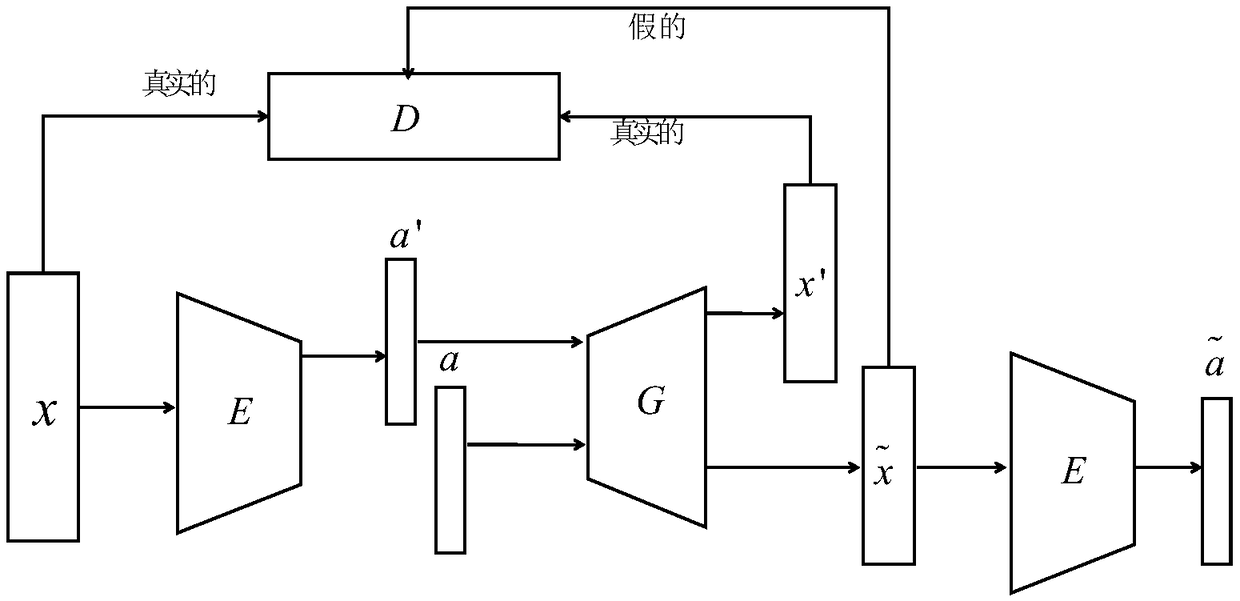Zero sample classification method based on antagonistic self-encoder model
An autoencoder and encoder technology, applied in the field of zero-sample classification based on the adversarial autoencoder model, can solve the problems of lack of discriminative information of visual features, ignoring the correspondence between visual features and category semantic features, etc.
- Summary
- Abstract
- Description
- Claims
- Application Information
AI Technical Summary
Problems solved by technology
Method used
Image
Examples
Embodiment Construction
[0032] A zero-sample classification method based on an adversarial autoencoder model of the present invention will be described in detail below with reference to the embodiments and the accompanying drawings.
[0033] A zero-sample classification method based on the adversarial autoencoder model of the present invention assumes that while using the category semantic feature to generate the visual feature, the reverse process of generating the category semantic feature from the visual feature is considered. Therefore, on the basis of using the adversarial network, an autoencoder is introduced to complete the bidirectional generation process through the process of encoding and decoding, so as to achieve the purpose of generating visual features and associating visual features with category semantic features.
[0034]An autoencoder is a type of neural network that is trained to copy input to output. The autoencoder consists of two parts, namely the encoder h=E(x) and the decoder ...
PUM
 Login to View More
Login to View More Abstract
Description
Claims
Application Information
 Login to View More
Login to View More - R&D
- Intellectual Property
- Life Sciences
- Materials
- Tech Scout
- Unparalleled Data Quality
- Higher Quality Content
- 60% Fewer Hallucinations
Browse by: Latest US Patents, China's latest patents, Technical Efficacy Thesaurus, Application Domain, Technology Topic, Popular Technical Reports.
© 2025 PatSnap. All rights reserved.Legal|Privacy policy|Modern Slavery Act Transparency Statement|Sitemap|About US| Contact US: help@patsnap.com



